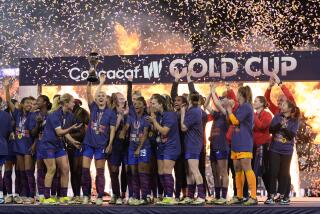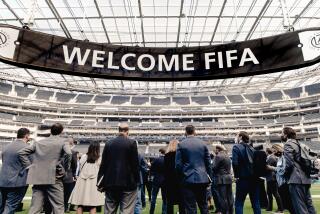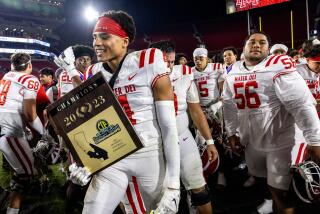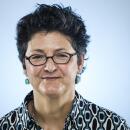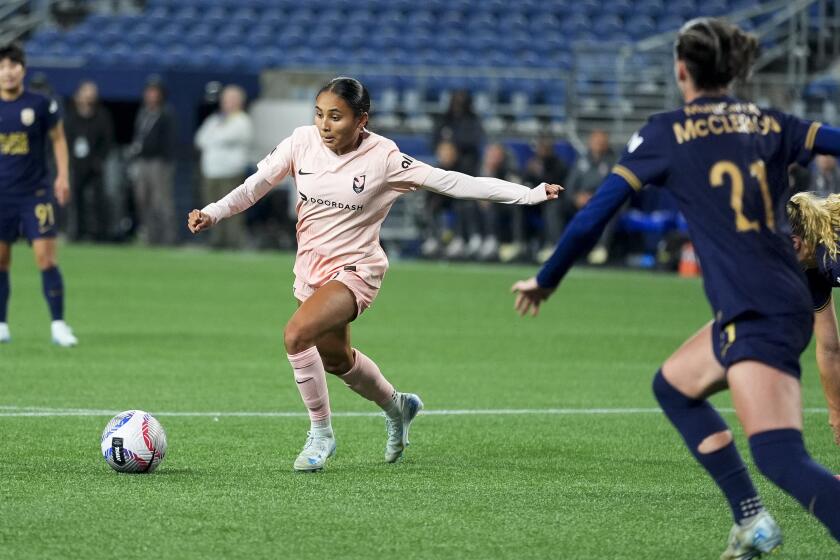World Cup’s Draw May Not Be Random : Soccer: Instead of ranking teams, system will place countries according to geography.
- Share via
LAS VEGAS — Soccer’s international governing body has changed the system for operating the World Cup draw, shifting the emphasis from international rankings in favor of geographical considerations that will make next summer’s tournament more appealing to fans.
According to a memo obtained by The Times, FIFA, the governing body, will abandon its previously announced plan for the draw, which will be held in Las Vegas on Sunday. The new system will allow weaker teams with little or no fan support to be placed into groups where teams such as Brazil and the Netherlands have strong fan support.
With this policy shift, FIFA opens itself to speculation that the draw, which is supposed to be blind and random, is fixed.
Alan Rothenberg, World Cup ’94 chairman, has already stated that ethnic fan base would be considered in placing the teams in nine U.S. cities that will play host to games. Italy, he said, could reasonably be expected to play in New York and Ireland in Boston.
But some wondered how he could make that projection if teams are drawn randomly.
FIFA has been sensitive to accusations of draw manipulation. It has presented the draw as a random process in which placement of teams could never be divined beforehand.
Even as late as two weeks ago FIFA announced a system that was different from what was presented in its confidential memo.
FIFA had said it would follow a procedure that seeded or ranked the 24-team field and placed six teams into four bowls according to descending order of rank. For example, the top six teams would be placed in Bowl 1, the next six in Bowl 2, and so on.
But the FIFA memo, dated Dec. 3, from General Secretary Joseph Blatter and sent to Scott LeTellier, managing director of World Cup ‘94, outlines a system that has nations placed in bowls or “pots” with no correlation to rankings. For example, Nigeria and Bolivia are in Bowl 2. Based on world rankings, the teams should in in the fourth bowl.
“This is a way to avoid manipulation,” FIFA spokesman Guido Tognoni said Tuesday.
Yet the system appears to do precisely that. Tognoni, when pressed, acknowledged: “You could call it a pre-draw draw.”
FIFA requires teams in the same qualifying regions to be separated in the World Cup final. Teams from Asia, Africa, CONCACAF and South America may not be drawn into the same group. For this reason, Mexico and the United States--both in the CONCACAF region--cannot be placed in Los Angeles, even though Mexico would enjoy tremendous support in the Southland.
Because Europe has 13 teams in the tournament, it is impossible to separate them. According to the memo, the draw would have five groups containing at least two European teams and one group containing three.
The revised system was designed “for geographical reasons, for geopolitical reasons,” Tognoni said. “With this, you avoid Brazil, Colombia and Bolivia in the same group. From the standpoint of fan interest, we must do this.”
The proposal does distribute teams well from the standpoint of geography. No one would be served by four European teams drawn into the same group, for example. In a seeded draw, the three African teams could possibly be placed together: Cameroon was in the second seeded group, Morocco in the third and Nigeria in the fourth. Placing all three in Bowl 2 will ensure their separation.
In the new configuration, Saudi Arabia and South Korea--teams that met in the Asian qualifying tournament in October--will be ensured of not repeating that showdown in the World Cup’s first round.
In another break from procedure, the fourth pot is broken into Bowl 4A, containing Saudi Arabia and South Korea, a so-called “hot pot.” By being placed in the same bowl, the teams will be drawn into different groups of competition. Bowl 4B contains Sweden, Greece, Norway and Switzerland.
The memo also proposes using colored bowls to draw the number designations after each group is formed. According to a source in the World Cup organizing committee, World Cup ’94 has rejected this idea in favor of clear bowls so that the hands of the person doing the draw would be visible at all times to avoid any appearance of manipulation.
FIFA is expected to formally announce the procedure at week’s end.
World Cup ‘94: The New Deal
A look at team seedings and their placement into pools or “pots.” Teams will be blindly drawn from the pots to form the tournament groups at the World Cup draw on Sunday in Las Vegas. The list on the left is based on past FIFA selection procedures and the manner in which the 1990 World Cup draw was conducted. The list on the right reflects changes proposed by FIFA in a confidential memo:
SEEDINGS BASED ON TRADITIONAL FORMULA
TIER ONE
* United States
* Germany
* Argentina
* Italy
* Brazil
* Belgium
TIER TWO
* Spain
* Russia
* Cameroon
* Ireland
* Romania
* Mexico
TIER THREE
* Colombia
* Netherlands
* Morocco
* Bulgaria
* South Korea
* Sweden
TIER FOUR
* Bolivia
* Greece
* Norway
* Nigeria
* Switzerland
* Saudi Arabia
PROPOSED SEEDINGS
TIER ONE
* United States
* Germany
* Argentina
* Italy
* Brazil
* Belgium
TIER TWO
* Cameroon
* Morocco
* Nigeria
* Bolivia
* Colombia
* Mexico
TIER THREE
* Spain
* Russia
* Ireland
* Romania
* Netherlands
* Bulgaria
* TIER 4A
* South Korea
* Saudi Arabia
* TIER 4B
* Sweden
* Greece
* Norway
* Switzerland
